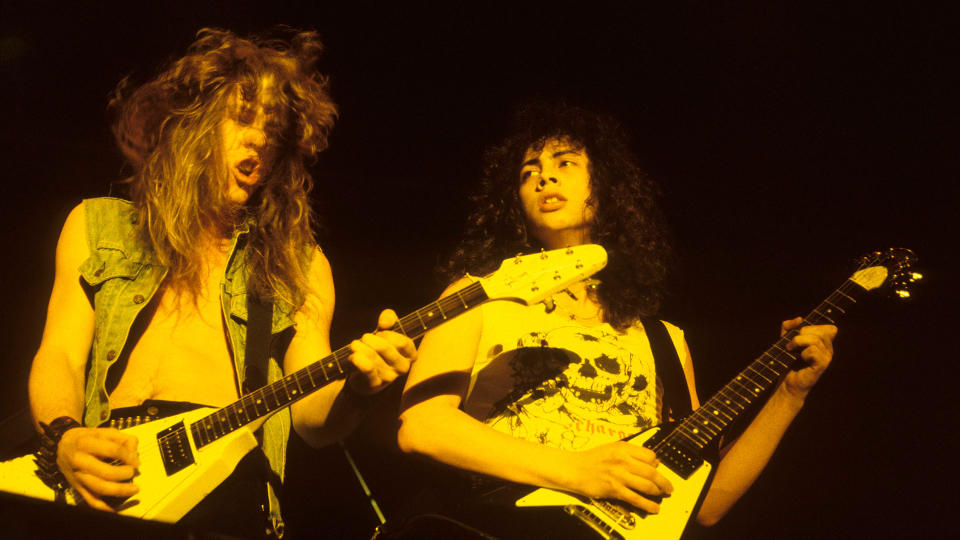James Hetfield says “if there was a guitar that changed the course of my history” it was this one – and it’s a cheap copy

Metallica frontman James Hetfield has announced the publication of a new book documenting his gear history, arriving in October. Titled Messengers: The Guitars Of James Hetfield, it sees the metal icon share the stories behind his favorite instruments.
While we’ll have to wait until October 17 for the full publication, there are some interesting tales to be had in the preview pages, including the story of the electric guitar Hetfield refers to as the ‘OGV’ – his original Electra Flying Wedge.
“I thought it was a Gibson Flying V, just like the one Michael Schenker used,” confesses Hetfield, in the spread about the guitar. “That's all I cared about. It was white, it was a V-shape, it had a Gibson plate on it, and it was cheap.
“Now I know why, because it was made in Japan. For me, it didn't matter. Later on, I think when we were in New York the first time, somebody said, ‘Err, that's not a Gibson! It's got a bolt-on neck!’ I didn't know, and I didn't care.”
Prior to the V, Hetfield details the “crappy five-dollar swap-meet guitar” he first learned to play on, noting, “I painted it probably ten times – at one point it had Eddie Van Halen stripes on it!”
It was only when he and Lars Ulrich agreed to play together in an appearance on the Metal Massacre compilation that Hetfield went looking for a new axe. He was, as alluded to above, spellbound by UFO at the time – and, in particular, the look of the band’s guitarist Michael Schenker, replete with long blonde hair and a white Flying V. As such, the ‘OGV’ gave him that confidence boost.
“What I think about most is how happy I was when Lars came over [to see it], because it felt like the beginning of all the ‘coolness’ that we were trying to achieve,” recalls Hetfield.
“It felt like we had arrived… [like] we were going to make it… I did not care that it was a copy of a Gibson. It played great, it sounded great, and it had the look that I wanted.”

 Yahoo Autos
Yahoo Autos 